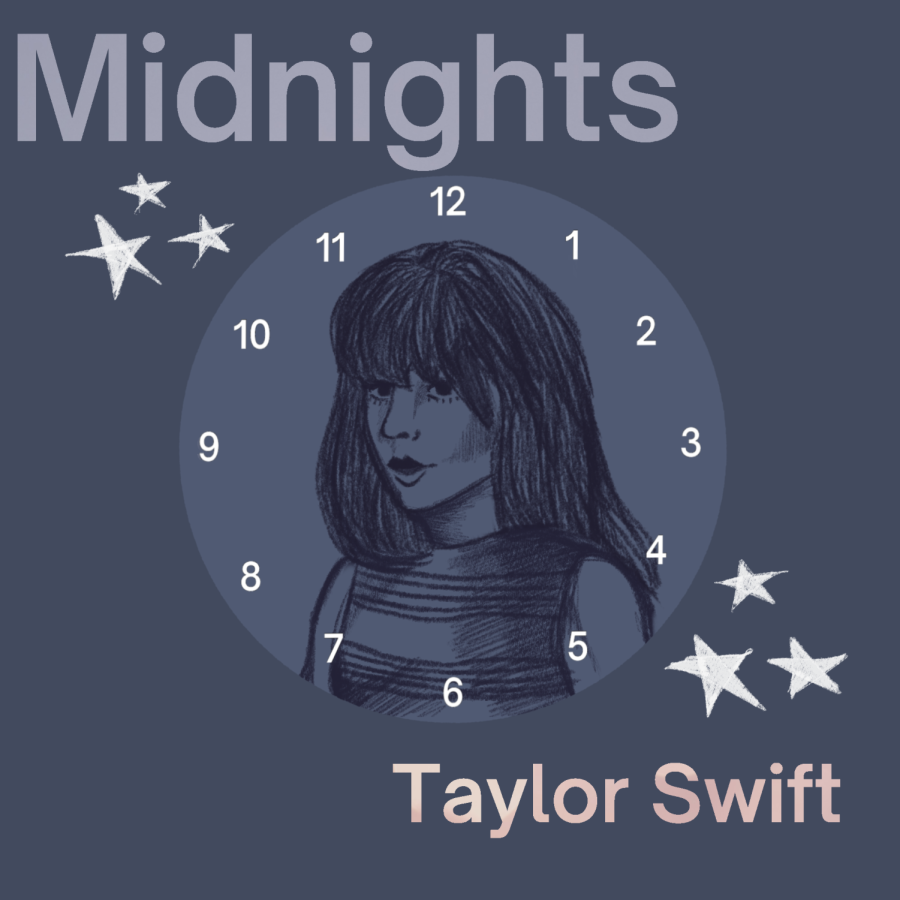Taylor Swift releases ‘Midnights’
From high expectations to disappointing execution
October 25, 2022
Two years after the release of “Evermore,” Taylor Swift released her 10th studio album “Midnights” on Oct. 21. “Midnights” is the first studio album after the re-recording of her previous albums “Fearless” and “Red.” The highly-anticipated album was met with excitement and enthusiasm from fans and critics after various teasers were posted on social media. The nocturnal album reflected Swift’s relationship with terrors of self-loathing, self-criticism, anxiety, insecurity and dreams of love.
When the clock struck midnight, Taylor Swift welcomed fans to 13 stories of sleepless nights scattered throughout her life — and that was the beginning of the problem. The album felt like 13 uncoordinated scraps from her past albums. Various tracks in the album have very similar melodies to other songs. The opening track “Lavender Haze” had a similar rhythm to “I Think He Knows” — the sixth track on her album “Lover.” In “Lavender Haze,” Swift sings in the chorus “I feel the lavender haze creeping up on me,” which has a similar vocal cadence to the “I Think He Knows” bridge where Swift belts her vocals. Vocal cadence is a repetitive strain in “Midnights.” The following track “Maroon” has a similar vocal cadence as well to “Come Back…Be Here” from her fourth studio album, “Red.” The last distinctive frequency would be in “Snow On The Beach” which compares to “Illicit Affairs” from “Folklore.”
While it feels nostalgic and pays homage to her past works, it raises the question if Swift is in a pivot of fading creativity. The restrained production and subtle synth-pop guides listeners from track to track, but somewhere in between, the songs start to sound the same. There were no captivating moments in the album where one would think about its unprecedented lyricism or rhythm. The highly-anticipated track “Snow On The Beach” featuring Lana Del Rey could not save the album and became a disappointment. Del Rey did not receive a verse in the song and was only used for unnecessary background vocals.
All the focus cannot solely be on Swift since she has a selective team of collaborators. Jack Antonoff is one of the main credited producers and songwriters on the album. He has collaborated with Swift countless times and has worked with Del Rey as well; however, fans question if this iconic duo is leading Swift’s music career into a downfall.
A few hours after the release of the standard album, Swift surprised fans with “Midnights (3am Edition),” a deluxe album featuring seven new songs. The shift from the standard to the deluxe version was heard through the lyrics and production. The standard album ended with “Mastermind,” a mischievous track detailing Swift’s personality of orchestrating the future. “The Great War” led the transition to the “3am Edition,” where a slight enhancement was heard through the lyrics and production of the track. The seven songs felt like a completed version of Swift with fresh lyrics. “Midnights (3am Edition)” strategizes a cohesive selection of what “Midnights” should have been.
“Midnights” may have been praised as experimental by critics, but it reflected more as a median and moment of stillness. The album does have highlights such as “You’re On Your Own, Kid” which became a standout track. The aesthetically pleasing visuals were inspired by the 70s and the album’s promotional campaign misled fans in different directions. Yet, in the end, fans receive a brand new album with sentiments of the night.













